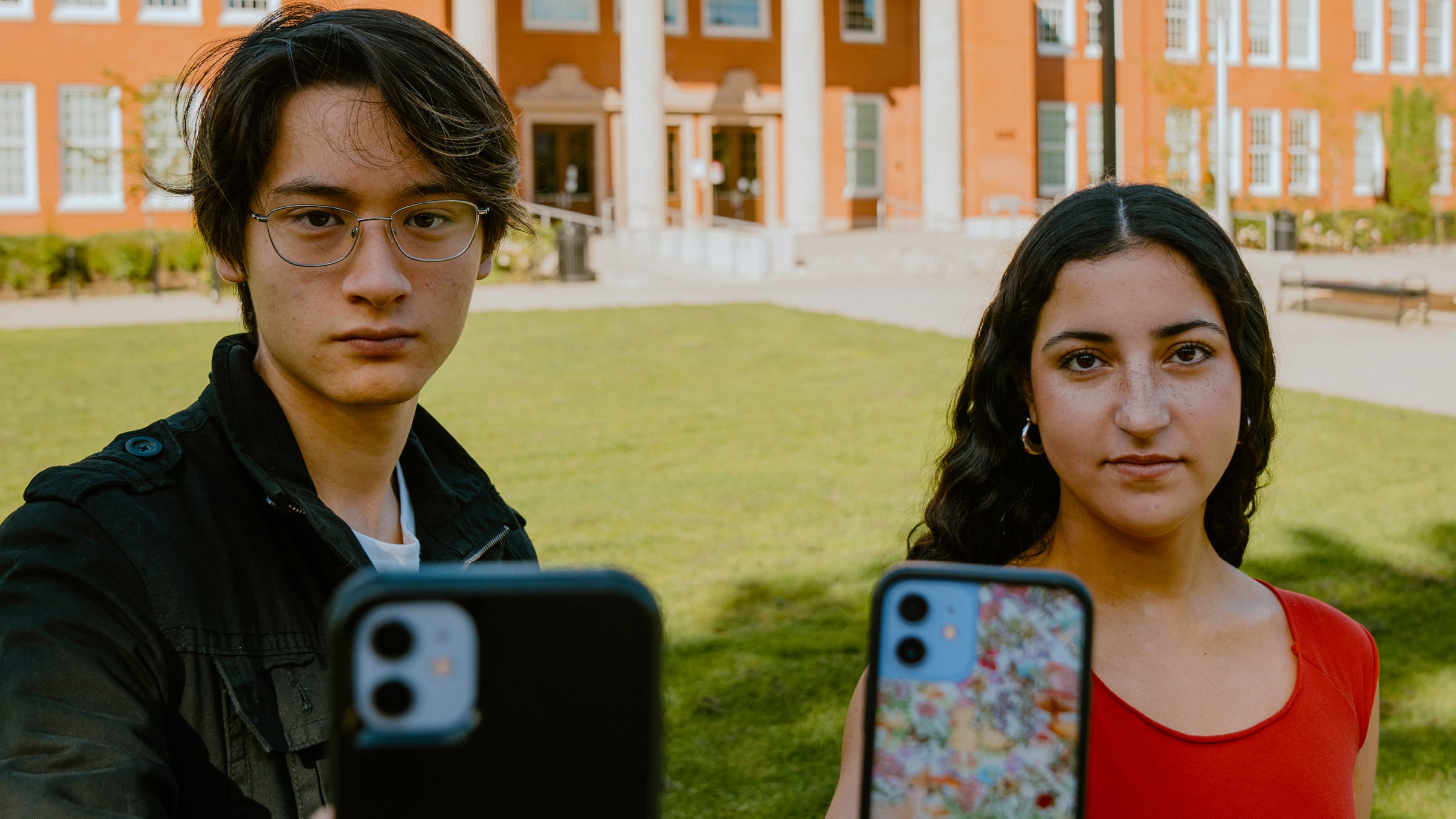This year, Grant High School Principal James McGee did something all the experts say is overdue: He created a cell-phone-free campus.
He was expecting students to focus better in class. He was hoping to stop online bullying and drug deals on campus. He knew there might be an outcry from students and parents. And yes, all those things have happened—to varying degrees.
But one result has come as a surprise: Lunchtime is loud again.
McGee works the lunch line every day, making sure students don’t cut on the way to the pizzas or burrito bar. He started in Portland Public Schools as a counselor at Lincoln High School in 2014, and working lunch is an easy way to maintain some of the contact with students he enjoyed earlier in his career. This fall, for the first time in years, he is seeing all their eyes again.
“They don’t have their cell phones in their hands, so they’re talking to each other and they’re talking to me,” McGee says. “Once they’ve gone through the line, especially this time of year, the kids are often outside, they’re on the grass eating lunch, and you can hear them laughing and talking to each other.”
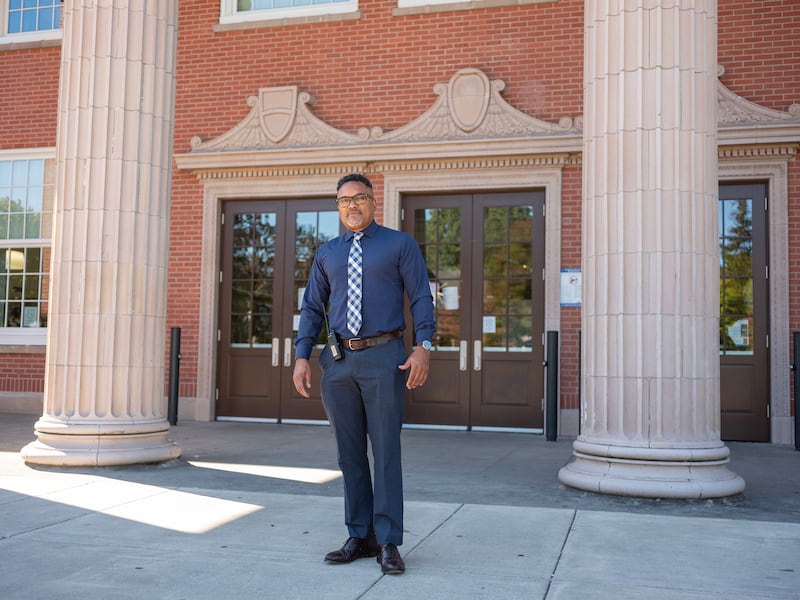
McGee, along with the principals at Beaumont Middle School and Cleveland High School, is leading the charge in PPS to rid their campuses of cell phones.
As of the start of this school year, the approximately 2,200 students at Grant must lock up their phones every day, from morning bell to dismissal bell, or leave them at home. They place them in Yondr pouches—gray and lime-green neoprene bags just large enough to accommodate the biggest iPhone models. Students place their phones (and smartwatches) in the pouches, snap the lock at the top shut, and keep them in their backpacks or lockers all day. The pouches can only be unlocked by tapping them against special magnets placed near the school’s exits.
Forget your cross-country uniform at home? Your girlfriend dumped you during passing period? Tough. You can text Mom or Dad after school or call from the phone in the office. (The latter option has come with complications, though, as almost all the students at Grant were born after the iPhone debuted in 2007. The office staff has to teach them how to dial out.)
McGee has known since he was the vice principal at Lincoln High in the late 2010s that phones had to get out of schools. He was tired of students pausing conversations with him to pick up calls from parents about minutiae like whether they wanted spaghetti for dinner. It was out of hand.
Then the experts started buttressing his observations with research. “Over the past few years, there’s been some really rich peer-reviewed empirical studies that have come out about the dangers of social media and smartphones on our teens, particularly our girls,” he says. “So reading this I’m like, we’ve got to do something. We’ve got to figure this out.”
More than 70% of U.S. high school teachers say that student phone distraction is a “major problem” in their classrooms, according to a fall 2023 survey by Pew Research Center. And a growing body of research shows a correlation between the advent of smartphones and social media and a decline in teens’ mental health. Rates of adolescent depression nearly doubled between 2010 and 2019, according to the Journal of Adolescent Health.
Jonathan Haidt’s The Anxious Generation, which argues that high-tech childhoods are causing an epidemic of mental illness, was practically required reading among parents this summer. (One Haidt statistic: American teens average nine hours of screen time a day, including five on social media.)

The PPS School Board is busy drafting a new policy to restrict cell phones in classrooms beyond the current “off and away” policy in place at most schools. New district-wide restrictions could go into effect as soon as the second semester of this year. Gov. Tina Kotek has expressed support for a statewide policy limiting the use of smartphones in Oregon schools. Nearly a dozen states have already done it, including Florida, Indiana, Louisiana and, as of Sept. 23, California.
McGee was done waiting. On August 27, the phone ban at Grant went into effect.
Managing children’s technology intake is arguably the central challenge of modern parenting. Wresting a cell phone out of a child’s hands is among the highest-conflict moments you can have. They whine, they bargain, they cry actual tears.
Principal McGee essentially pulls off this high-stakes maneuver two thousand times a day.
The result on the sprawling Grant campus in Northeast Portland is a revival of human contact but also a great social experiment with 2,200 mostly reluctant participants. And like some addicts, the teenagers of Grant High School aren’t eager to go cold turkey.
Every student interviewed for this story acknowledged the benefits to Grant’s Yondr era. They are also, in a word, pissed.
No Grant student is as publicly opposed to the new cell phone policy as junior Noah Brown. Brown wrote a petition on change.org last spring, slamming the cell phone policy as “an ineffective decision, a waste of time and money, and a safety risk.” So far, more than 1,300 people have signed it.
As students streamed past him on the Northeast Thompson Street sidewalk after dismissal one sunny afternoon last month, Brown dismantled his school’s new cell phone policy piece by piece like the mock trial attorney he is. Congestion at the front door has been one of the early logistical problems of the Yondr era, with some students reporting waits of up to 15 minutes to get their Yondr pouches checked by school staff in the morning before hustling to first period, tardy.
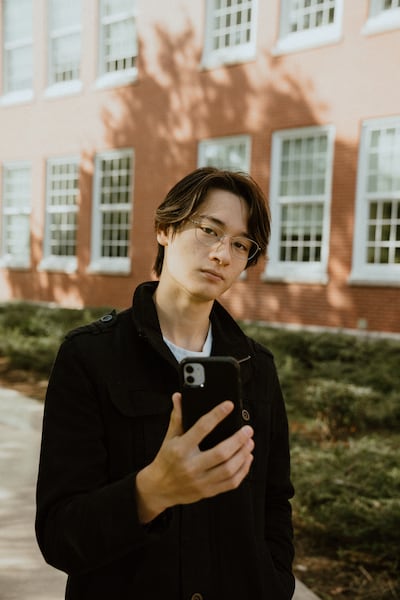
Brown criticized everything from McGee’s announcement in May (which Brown characterized as “an email saying, ‘Hey, Yondr pouches exist. We’re using them.’”) to the finances and the referrals.
The punishment for having a phone out at Grant this year is a “Level 2/3″ referral, on par with starting a fight in the hallway, McGee says. A copy of the referral goes in the student’s behavioral file, and rumors are rampant among students and parents that colleges will see it on applications. According to a PPS spokesperson, this is not true; the district does not send discipline records to colleges. Staff takes the phone away and stashes it in the office until their parent or guardian can pick it up. McGee says he’s got a drawer of cell phones in the office, some intentionally left to languish.
“Some parents have said, ‘We’re not picking it up right now. We’re going to leave it there for a while,’” McGee says.
Brown wants a softer policy—and certainly phone access at lunch and passing periods.
“I have no issue with the idea of Yondr pouches or a cell phone policy. It’s just the execution of the policy and the punishments being levied for these policies are too extreme,” he says.
The conversation quickly turns to the possibility of a school shooting. What about each teacher having a Yondr unlocking magnet in their classroom in case of emergency? he wonders. If the entire school is locked down and students are huddled under their desks or in the corners of their classrooms, shouldn’t they be able to call 911 or text their parents?
“Yes, this is a worst-case scenario, and, yes, this is very unlikely to happen,” Brown says. “But it’s bringing up that there are fundamental issues with the Yondr pouch policy and with the way the school is executing it.”
Worst-case scenario, yes, but Grant already had a shooting threat by the third week of school. (The Portland Police Bureau investigated and pretty quickly debunked it as originating from a Snapchat account in Sacramento, but there was a heightened police and security presence at the school for a few days “out of an abundance of caution,” McGee wrote in an email to the community.)
Counterpoint from Grant teachers: They all have phones available, and there is danger to students having phones during a shooting, including the spread of misinformation and attracting the gunman’s attention with phone noise.
Senior Claire Coffey has the unexpected distinction of being the first student at Grant this school year to have her phone confiscated for being out of its Yondr pouch. It was the “welcome back” day at school, and Coffey was there early to mentor a group of freshmen, so she didn’t know the new cell phone policy was already in place. And she’d had her phone out for the very overachiever reason of finishing her summer homework for Grant’s decorated Constitution team.
“I’m very much a rule-follower,” Coffey says. “Everyone was so shocked that I was the first one. My volleyball coach was like, ‘Claire Coffey? It was you?’”
Less funny: she got a referral, per school policy. Coffey and her parents are “very worried” about the referral on her record as she goes into college application season.
“The punishment doesn’t fit the crime, and that’s how a lot of students feel,” Coffey says.
The list of student work-arounds to the Yondr policies at Grant and Cleveland is extensive. Students have undone the stitching around the magnet so that the pouch doesn’t lock properly anymore. They put burner phones or calculators in their Yondr pouches and keep their real phones hidden but accessible. Apparently an RXBAR in a Yondr pouch is the right size and shape to get past campus security in the morning. Students have propped doors open for fellow students to sneak in without a Yondr check (which is another referral), purchased specialized magnets off the internet to unlock pouches, and done one other thing to a Yondr pouch that is apparently quite effective at disabling it (but we were sworn to secrecy).
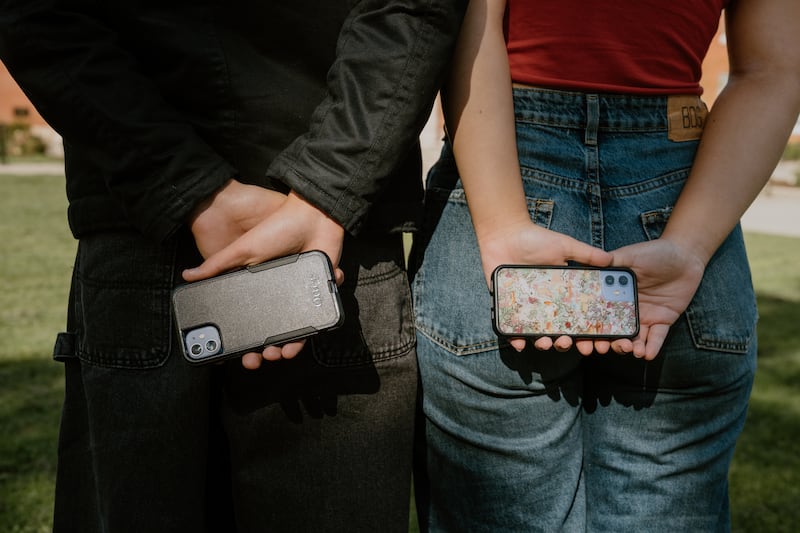
Multiple students estimated that the compliance rate sits around 50%.
For 17-year-old Amalia Held, lunchtime has not been the idyllic lawn scene McGee describes. Finding her friends has been such a nightmare that Held started bringing her family’s camping walkie-talkies to school every day. “I found them in my closet, and I was like, ‘Yes! This is perfect.’”
She really leaned into the absurdity, too, ending messages to her friends with “over and out.” The walkie-talkies only stuck for about a week, though. Held ran into some analog tech issues: static on the line and intercepting random people’s transmissions.
Margot Kalmanson, 16, is one of four editors-in-chief of Grant Magazine. This past summer she interviewed a parent who was so distressed about not being able to contact her son in the case of an active shooter that she encouraged him to put a fake phone in his Yondr pouch.
Reporting has been a huge challenge this year, though, since Kalmanson and her fellow student journalists can’t access their phones seven hours a day to reach out to sources. It’s also been hard to run Grant’s period club UterUS, which donates menstrual products, without QR codes. Still, Kalmanson says the pros of Yondr are narrowly outweighing the cons.
“I am more focused on what’s in front of me and I can pay attention to the teacher more without being distracted by my own or other people’s devices,” she says.
For folks who haven’t stepped foot in a high school since graduation, it’s difficult to appreciate how much cell phones have changed students’ day-to-day experience. There are conveniences, such as being able to scan QR codes to join clubs, Google the Roman Empire, or find a ride after school (or DoorDash an entire pizza to yourself for lunch, which was happening at Grant last year). But each phone notification is a temptation to break concentration from schoolwork, and every transition is an excuse to hunch over a phone rather than face the inherent awkwardness of adolescence.
This year’s phone ban was an escalation after less dramatic restrictions failed to overcome teens’ obsession with their devices.
Last year, McGee provided plastic shoe caddies to every classroom, where students were expected to store their cell phones during class and then grab them on their way out. But some students resisted giving up their devices, meaning that teachers were beginning each class period with a power struggle.
“Or they’d put old phones into the slots or just the case, and you’d have to be checking,” says Abraham Maletz, a government and economics teacher. “It was a fight every day. From bell to bell you were policing the phones, in all classes, 170 days a year.”
And back to lunchtime, Maletz recalls that before Yondr, “tons of kids would sit on the floor and look at their phone for half an hour on their own. And they were pretending they were social, texting a friend, but that’s the loneliest thing I’ve ever seen.”
Even if teachers got the teens’ cell phones in the caddies, they also had to check for headphones. Students would pop in earbuds, cover their ears with their hair and listen to music rather than the lessons.
And that’s just misbehavior in the classroom. Much of the online bullying happened during passing periods, such as the anonymous Instagram account dedicated to fashion fails at Grant. The feed consisted of unflattering photos of people’s outfits and kids sleeping during class. The bullying didn’t stop at students: someone posted a photo on Instagram of a teacher gesturing at something in her classroom in a way that looked just enough like a Nazi salute. Even more seriously, drug dealers would circulate elaborate menus to students during the school day of substances available for sale, McGee says.
Enter Yondr.
Realizing his campus needed a change, McGee met last year with a representative from Yondr, accompanied by Harriette Jackson-Vimegnon, Beaumont Middle School’s principal. The two administrators worked closely to roll out Yondr at their schools—a natural fit since Beaumont feeds into Grant. McGee saved odds and ends from his district-provided budget for almost an entire school year for Grant’s Yondr program, which cost $60,000.
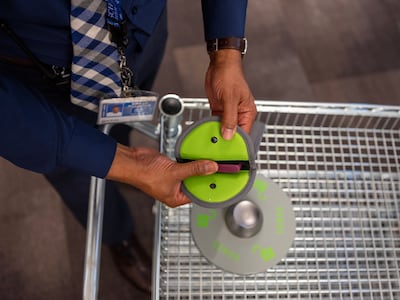
Yondr is a California company with a Portland founder: Graham Dugoni is a Jesuit High School graduate who got the idea for Yondr at a San Francisco music festival in 2012. (In addition to schools, the pouches are also popular at concerts and comedy shows.) Yondr pouches cost about $25 to $30 per student. The company had a more than tenfold increase in sales from government contracts (primarily school districts) from 2021 to 2023, from $174,000 to $2.13 million, according to the data service GovSpend.
Cell phone policies vary statewide, but middle schools and high schools in North Clackamas Schools and Seaside went Yondr this year, while Taft 7-12 Middle and High School in Lincoln City started with the pouches last year.
Before McGee announced the Yondr policy last spring, he conducted an informal focus group of about 25 students to hear their thoughts. Twenty-four of them thought it was a terrible idea.
He and Jackson-Vimegnon held two informational meetings for the community last June and braced for parent pushback. But only about a dozen people showed up, and they had polite questions.
And at Grant’s back-to-school night, parents approached McGee to thank him for the new phone policy, grateful to have a partner in the good fight against teenage technology saturation. Because, in our own homes, parents are on a parallel journey.
This reporter has one teenager with a phone (her two younger siblings are deviceless, akin to child abuse, in their eyes), and managing it has been like a game of Whac-A-Mole. We told her she’s not old enough for social media at age 13, so this summer, she and her siblings hacked my passcode, undid all my parental controls and downloaded Snapchat and TikTok. I didn’t figure out the extent of the conspiracy for three weeks, though I did respect the sibling cooperation and code of silence.
It’s like being in a home with an Olympic doper: Kids will always be ahead of the tests we have to see what they’re on. So the RXBARs and burner phones in the Yondr bags, the undone stitching and the smuggled magnets? Nothing could surprise me less.
Sandy McDaniel, Grant’s Parent Teacher Association president, says the policy has broad parent support and has made her think twice before texting her two sophomores during the school day.
“My kids are constantly looking at their phones when they’re at home,” McDaniel says. “I want them talking and engaging with their teachers and with their classmates at school.”
Svati Nicholson says her career as a pediatrician has informed her decisions around screen time as a parent. Her son, a junior at Grant, didn’t have a phone until high school. (That’s about as late as you can push it in mainstream American parenting, or the kids start to pay pretty severe social consequences.)
But as youth mental health worsens with technology, she and McDaniel agree that the school should enforce the consequences it needs to make the policy work.
“The power of the screens is so strong,” Nicholson says. “I’m a believer sometimes in extrinsic motivation to start a behavior, and then you can see the benefits of it and develop your own internal motivation…It gives a little backbone to the rule.”
For a hint of where this is all heading, look to an alternative high school four miles south and three years ahead of Grant in its Yondr rollout. At Mt. Scott Learning Center in Foster-Powell, Aaron Balogh, the director of student life, brought in the pouches for the school’s estimated 150 students when they returned from distance learning in 2021. Students were “instantly more engaged in classes,” Balogh says, plus making friends at lunch rather than using social media to zone out or stir up drama.
Balogh would offer this advice to McGee: “Commit fully and sustain the practice for the full day. It’s worth it.”
Balogh is such an evangelist for phone-free campuses that Yondr occasionally asks him to talk about his experience to schools across the country.
“You’re not taking something away,” he says of Mt. Scott’s no-cell-phone policy. “You’re giving them something.”
The PPS School Board, though, is not preparing to give Yondr pouches to the entire district, says board member Julia Brim-Edwards. Though the new cell phone policy draft is still working its way through committee this fall, the idea is that it will be broad enough that principals will be able to choose how they want to enforce it, whether it’s Yondr, caddies at the classroom door, or lockboxes, which is what Lincoln has this year. “We’re not going to prescribe exactly how this gets enforced at the school level,” Brim-Edwards says.
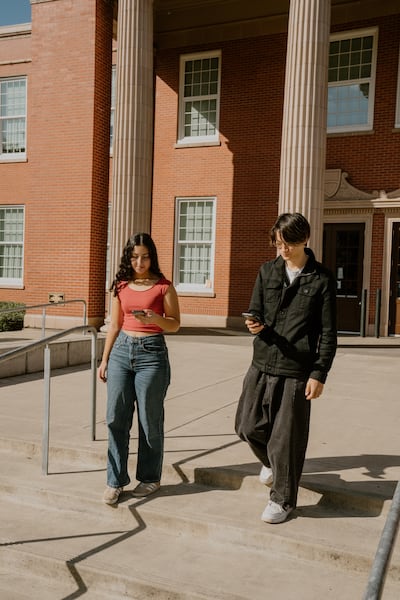
She adds that principals have the authority to set their own cell phone policies as long as they meet or exceed the school board’s base requirement.
At Grant, math teacher Jamie Lyle already sees a huge change in her students and is relieved to have her whole class periods for instruction and building relationships with students rather than policing phones.
“It feels like another world,” she says. “It’s really been amazing and wonderful. And I don’t use those words lightly.”
Lyle was chatting with a Spanish teacher whose students are more willingly participating in the dances and skits that come with learning a new language. Nobody is filming them anymore.
Social studies teacher Andee Short noticed an uptick in student engagement on the very first day of school. A group of four students at a table who didn’t know each other had to figure out how to spell the word “acknowledge.”
“I haven’t seen that kind of peer collaboration in years,” Short says.
A month into Grant’s Yondr era, despite the gripes from students and the colossal administrative lift, McGee stands firm.
“I sleep well because it feels that it’s the right thing to do,” McGee says. “Somebody needed to stand up and say, ‘This is an issue. We need to address it.’ I don’t mind being that person.”
Additional reporting contributed by Joanna Hou.
